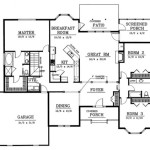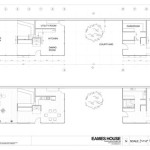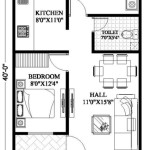Home Budget Planner Excel Sheet
Managing personal finances effectively is crucial for achieving financial stability and reaching long-term goals. A home budget planner Excel sheet offers a powerful and customizable tool for tracking income, expenses, and savings. Its flexibility and readily available features make it an ideal solution for individuals and families seeking to gain control of their finances.
One of the primary advantages of using an Excel sheet for budgeting is its adaptability. Users can tailor the sheet to match their specific financial situation and preferences. Various templates are readily available online, offering pre-built structures that can be modified to accommodate individual needs. This customization allows for the inclusion of specific expense categories, income sources, and savings goals relevant to each user.
Tracking income and expenses forms the core of any budgeting process. An Excel sheet provides a structured format to meticulously record all sources of income, including salaries, investments, and other earnings. Equally important is the ability to categorize and track expenses, whether fixed, variable, or periodic. This detailed record-keeping facilitates a clear understanding of where money is being spent, revealing potential areas for savings and improved financial management.
Calculating savings is simplified with an Excel sheet. By subtracting total expenses from total income, users can quickly determine their net savings for a given period. This readily accessible information allows for adjustments to spending habits and savings strategies to optimize financial outcomes. Furthermore, users can project future savings based on current trends and anticipated changes in income or expenses.
Visualizations, such as charts and graphs, enhance the understanding of financial data. Excel offers a range of charting options to represent income, expenses, and savings visually. These visual aids can highlight spending patterns, identify areas requiring attention, and track progress towards financial goals more effectively than reviewing raw numerical data alone.
Formulas and functions within Excel automate many budgeting tasks. Simple formulas can be used to calculate totals, averages, and percentages, reducing manual calculations and the risk of errors. More advanced functions can be employed for complex financial analysis, providing deeper insights into spending habits and investment performance.
Scenario planning becomes significantly easier with an Excel sheet. Users can create different scenarios by adjusting income, expenses, and savings variables. This allows for exploring the potential impact of financial decisions, such as taking on a loan, making a large purchase, or increasing retirement contributions. Such analysis aids in making informed choices aligned with long-term financial objectives.
Data management is simplified with Excel's features. Sorting and filtering options allow users to organize and analyze their financial data based on various criteria. This facilitates quick access to specific information, such as expenses within a particular category or income from a specific source. The ability to easily manipulate and analyze data empowers users to identify trends and make informed financial decisions.
Accessibility is a key advantage of using an Excel sheet for budgeting. Excel is widely available, either as part of the Microsoft Office suite or as a standalone application. Furthermore, free alternatives and online versions are readily available, making it accessible to a broad user base regardless of operating system or software budget.
Security is an important consideration when dealing with sensitive financial information. While Excel itself offers basic password protection features, users should exercise caution and consider additional security measures depending on their individual circumstances. Storing files securely and backing up data regularly are essential practices to protect sensitive financial information.
Integrating an Excel budget sheet with other financial tools can further enhance its functionality. Data can be imported from bank statements or other financial software, automating the data entry process and ensuring accuracy. Connecting the budget sheet with online banking platforms allows for real-time tracking of transactions and account balances, providing up-to-date financial insights.
Learning to use Excel effectively for budgeting does require some initial investment of time. However, numerous online resources, including tutorials and templates, are available to assist users in developing the necessary skills. The long-term benefits of improved financial management and control far outweigh the initial learning curve.
Maintaining consistency is crucial for realizing the full potential of a home budget planner Excel sheet. Regularly updating income and expenses, tracking progress towards goals, and periodically reviewing the budget are essential practices for maintaining accurate records and making informed financial decisions.
While a home budget planner Excel sheet offers a powerful and adaptable tool for managing personal finances, it's important to recognize that it's only one part of a comprehensive financial plan. Seeking advice from financial professionals can provide valuable insights and guidance tailored to individual circumstances and long-term financial goals.

Household Budget Worksheet For Excel

Family Budget Planner Free Spreadsheet For Excel

Monthly Budget Spreadsheet For Excel

Home Budget Worksheet Template

Family Budget Planner For Excel

Family Budget Planner Free Spreadsheet For Excel

Monthly Household Budget Template Free Excel Csv

The Best Family Budget Excel Template For Free Wps Office Academy

Household Budget Planner Spreadsheet For Excel

10 Free Household Budget Spreadsheets








